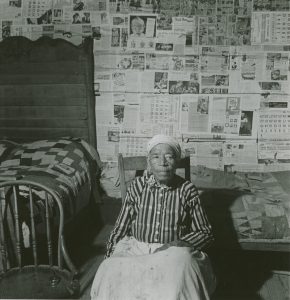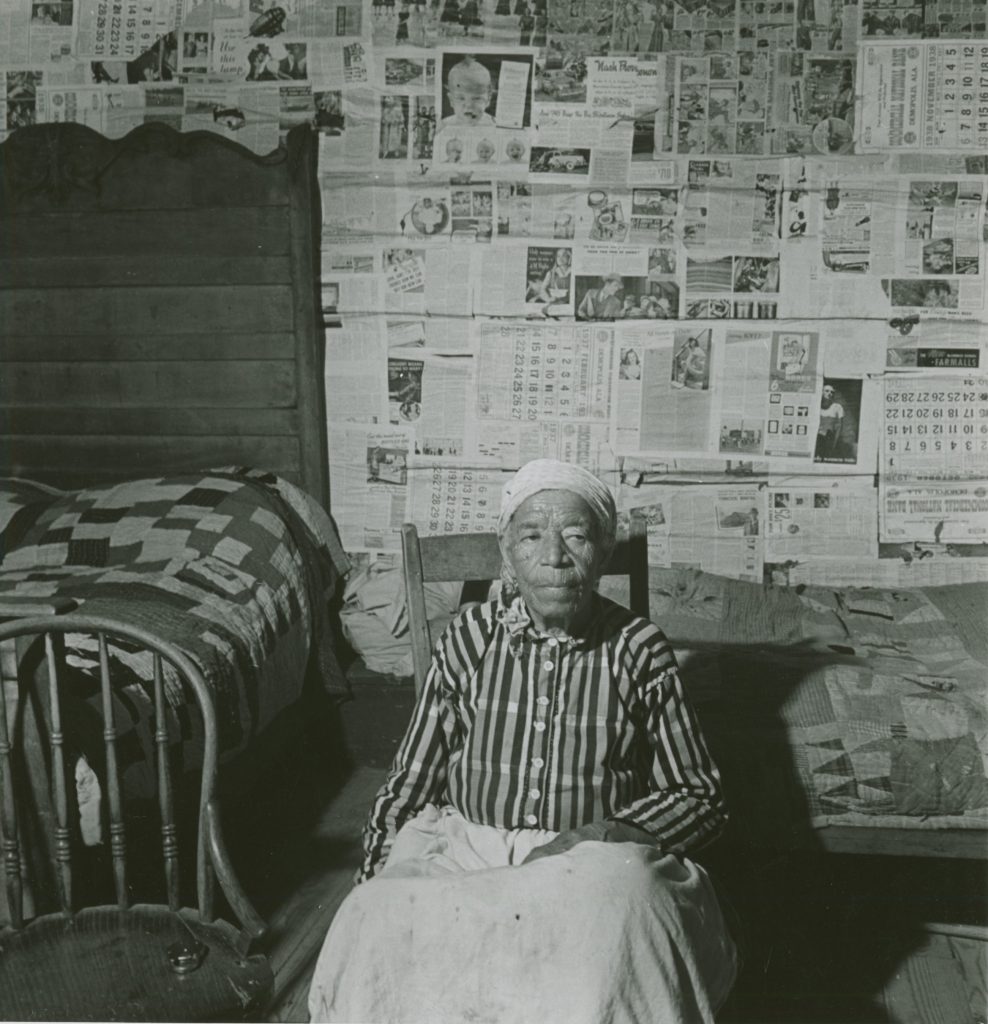The Black Codes
Picture it! America. 1865-ish. The confederates just lost the civil war and slavery is supposed to be over. But the slave-owners, relying almost entirely on the free labor of enslaved Africans, are unwilling to let go of the cause of their prosperity.
So they pass the Black codes (or laws). Or more precisely, they passed the most widely known Black codes. Black codes had existed before the civil war and even the Northern states had them as early as the 1600’s.
In the south, many of these earlier Black codes were included naturally in the Slave codes. Those codes were used to suppress black freedmen as well as keep control over slaves.
Slaves weren’t allowed to read and write, gather in groups to worship, vote, or bear arms, testify against white people, or exercise free speech.

Free black people had even more laws that restricted their freedoms. Since they weren’t under the control of a master, they were considered a greater threat.
The broad, sweeping vagrancy laws and apprentice laws allowed ex slave-owners to continue receiving unpaid labor. The vagrancy laws targeted unemployed blacks. And in fact there were laws enacted, after slavery was abolished, that required black people to show proof of yearly employment or risk being imprisoned and leased out to plantation owners for unpaid labor.
Add to that, the clever idea to pass laws that excluded black people from certain trades, causing large scale unemployment. The entire system incentivized the arrest and imprisonment of black people. The prisons were being paid to lease the convicts out to plantations and the plantations were able to continue to receive cheap labor.
The apprenticeship laws were created to allow white people to take ownership of orphaned black children, using them as slave labor. The children didn’t have to be orphaned either. A judge just had to rule that the parents were unfit or unable to take care of them.
The Aftertaste of the Black Codes
There is a great deal of denial when it comes to the continued effects of the black codes. It’s impossible NOT to see the similarities. As we speak, privatized prisons are making millions off leased labor of prisoners. Black people are more likely to get longer sentences for the same crimes that whites commit. In fact, blacks are more likely to be locked up for trumped up or exaggerated charges altogether.
So, a prison system that disproportionately targets blacks and has an incentive for prisons to keep them longer…check. A police force that disproportionately targets blacks and is required by their employers to get a certain amount of arrests and give a certain amount of tickets to maintain their funding…check. The police spread their forces thickly through the impoverished and minority neighborhoods. The prisons and the police have the incentives to capture and imprison black people.
As with America in the 1860’s, white fear and their discomfort with free black people is the key factor in allowing these laws to persist today. The “Barbecue Becky’s” are widespread and I propose, a greater threat than even the police.
After all, they are the watchdogs of society, fearful and vigilant. Ready to call the police on any unarmed child, should their sense of superiority or comfort be threatened.
Surviving the Black Codes
Getting past the Black codes is a tricky matter. We are more likely to create our own sovereign nation than to get a country full of MAGA lovers to care about the plight of the black person. Indeed, you will find that these same people have been gearing up and readying themselves for a “race war”…while black people have just been trying to survive. Getting past the black codes will take generations of wealth building and unification among black Americans. Only with the power of wealth, can we afford to control our place in America. And only with unification, can we create the generation of leaders who will deserve our votes.
And then came Jim Crow
The Jim Crow era lasted for about 100 years. Until the 60’s when civil rights laws were passed. During that 100 years black people were subjected to forced segregation. Often punishable by violence and death, the laws were enforced by police, KKK, and average white citizens.
Unable to use white public parks, restrooms, restaurants, etc, black people began creating their own. The attempts to create prosperity while segregated, were met with violence and suspicion. In 1921, a thriving black community in Tulsa, Oklahoma was destroyed. Hundreds killed.
One unpopular school of thought, was that segregation was the best thing that ever happened to the black community. Being separated from white people, forced the black community to create it’s own economic power and businesses. Their close knit communities valued family and the black dollar stayed inside the community for longer.
Once desegregated, black people began spending their money in white communities, lining white pockets. Many black businesses, unable to compete with white competition and decreasing black customers, went out of business.Today, blacks have a spending power of $1.6 trillion, almost exclusively lining white pockets.
What Jim Crow Laws still exist?
The laws enacted to keep segregation in place after the civil rights act was passed, were more detrimental than segregation itself. Desegregation had several effects that led to current social issues in the black community.
Inclusion into white economy not only ruined black enterprise, but also halted the progress towards generational wealth that black Americans had acquired. The lack of wealth among the black community and ensuing poverty opened the door for crime. This, coupled with the governments tendency to sabotage with experimentation and introduction of drugs into the black community, all but destroyed the black family.
But what Jim Crow laws and Black codes still exist?
Education
Brown vs Board of Education may have federally desegregated public schools, but that doesn’t matter. Racism has a tricky way of being subtle and clever, involving many working parts. Racism in economics, education, and criminal justice all work together to control black lives much the same way the black codes and Jim crow laws did. Racism still persists in education today, fueling the preschool to prison pipeline.

Discipline
Black children are 3 times more likely to be expelled or suspended than white students. In 2016, a report on racial disparities showed that 13 southern states accounted for 55% of all black suspensions. Even more telling…in 84 southern counties, 100% of their suspended children were black.
Another study from 2016 says that whites begin perceiving black people as threats as young as 5 years old. Which would explain for the disproportionate amount of black preschoolers who are suspended in this country…for doing things that 5 year olds sometimes do.
The amount of suspensions and subsequent amount of time missing from school, readily contributes to falling grades, falling behind, low scores on standardized tests, dropping out, and in some studies…the rise of adolescent suicide among young black boys.
And don’t forget, black children usually go to a school with a heavy law enforcement presence, increasing their chances of becoming victims of the criminal justice system.
Special Ed
On top of discipline, there’s the actual quality of education of black kids in school. Black children are far more likely to be identified as having learning disabilities and much less likely to be considered gifted or talented. The same studies show that when black children have black teachers, that this isn’t the case.
Additionally, black, hispanic, and native american children are more likely to have underqualified teachers and less access to honors and AP classes or college prep resources. This effectively lowers their chances of being accepted to 4 year universities.
Redlining and gentrification
Redlining can be said to be one of the clearest forms of institutionalized racism today. Redlining is the process banks and other institutions use to refuse to offer mortgages or offer worse rates to people in certain areas because of their race.
Exclusion
After slavery was abolished, there were exclusionary zoning laws. Prohibiting the sale of land to blacks was the first step. After the supreme court ruled those laws were unconstitutional, it switched to racially restrictive covenants. This meant that homeowners banded together to make sure no one of color was able to buy a house in their neighborhood.
This wasn’t enough though. Because when the Federal Housing Administration was introducted in the 1930’s, the federal government brought redlining in to use to qualify which neighborhoods could receive mortgage loans.
- Green (“Best”): Green areas represented in-demand, up-and-coming neighborhoods where “professional men” lived. These neighborhoods were explicitly homogenous, lacking “a single foreigner or Negro.”
- Blue (“Still Desirable”): These neighborhoods had “reached their peak” but were thought to be stable due to their low risk of “infiltration” by non-white groups.
- Yellow (“Definitely Declining”): Most yellow areas bordered black neighborhoods. They were considered risky due to the “threat of infiltration of foreign-born, negro, or lower grade populations.”
- Red (“Hazardous”): Red areas were neighborhoods where “infiltration” had already occurred. These neighborhoods, almost all of them populated by Black residents, were described by the HOLC as having an “undesirable population” and were ineligible for FHA backing.
The effects of these policies still exist today. In 2010, the New York Times exposed Wells Fargo for following similar guidelines for giving out loans and overall, black people are less likely to receive a mortgage loan and usually pay more interest.
If you can’t afford to live in a good neighborhood, then you have to live in a bad neighborhood. What does one find in bad neighborhoods? Crime, poor education, and higher costs for lower quality goods.
Economic policy
Did you know, it’s expensive to be poor? Or rather, the cost of poverty is extremely high. And poverty begets poverty. How about an example.
Hardworking family is refused a mortgage in a good neighborhood and is instead relegated to a poor, crime ridden neighborhood. Their children go to terrible schools, increasing the chances they won’t go to college and lowering their earning power. That same family has to pay higher interest rates on the housing they do have. There are few employment opportunities in their neighborhood, so they either must take lower paying jobs, or work outside of their neighborhood. The cost of gas is more expensive in poorer neighborhoods. So it costs more for that poor family to even go to work, where they statistically make less. Their neighborhood has a high police presence, increasing the chances of arrest and imprisonment.
If they do end up in jail, they can’t afford to bail out and may lose the employment they do have.
Larger chain stores with cheaper costing goods don’t generally set up shop in poorer neighborhoods, so the residents must pay higher costs for lower quality household goods, personal items, as well as groceries.
Additionally, poorer neighborhoods usually lack access to basic services and resources. Even healthcare and banking are lacking or substandard in poorer neighborhoods.
Criminal Justice System
One of the most obvious ways that the black codes and jim crow laws still affect black Americans is in the criminal justice system.
The War on Drugs
The war on drugs decimated black communities everywhere. On several fronts. While studies have proven that whites engage in drug offenses more than blacks, black people are more likely to be arrested and imprisoned because of drugs.
- “People of color experience discrimination at every stage of the criminal justice system and are more likely to be stopped, searched, arrested, convicted, harshly sentenced and saddled with a lifelong criminal record. This is particularly the case for drug law violations.
- Nearly 80% of people in federal prison and almost 60% of people in state prison for drug offenses are black or Latino.
- Research shows that prosecutors are twice as likely to pursue a mandatory minimum sentence for black people as for white people charged with the same offense. Among people who received a mandatory minimum sentence in 2011, 38% were Latino and 31% were black.
- Black people and Native Americans are more likely to be killed by law enforcement than other racial or ethnic groups. They are often stereotyped as being violent or addicted to alcohol and other drugs. Experts believe that stigma and racism may play a major role in police-community interactions.”
- Race and the Drug War
3 strikes law
So, knowing that law enforcement disproportionately targets black people , we come to the 3 strikes law.
California passed the law and 2 years later and the imprisonment rate for black Americans went up to 13 times that of whites.
A few statistics for you to think over:
85% of all inmates incarcerated under the this law were guilty of nonviolent offenses in their second or third convictions
39% of the state’s African American men in their 20s were imprisoned, in jail or on probation. The rate was about one in 10 for young Latino males and one in 20 for white men.
The conclusion of the study suggests that, because prosecuters have some leeway in whether they charge a crime as a misdemeanor or felony, and because the 2nd and 3rd offenses were by in large nonviolent, the 3 strikes law was used to racially discriminate and imprison black men.
Healthcare
Blacks and other minority groups in the U.S. experience more illness, worse outcomes, and premature death compared with whites. It’s not an opinion, that’s fact. The reasons are clear, but the methods are varied.
“Hospitals and clinics, which were once designated for racial and ethnic minorities, continue to experience significant financial constraints and are often under-resourced and improperly staffed.” says the AAFP.

Many organizations even discriminate based on discriminate based on insurance status, which also disproportionately affects black people.
Even the fact that black women are more likely to die in childbirth due to doctors misdiagnosing or ignoring warning signs is a problem. They are less likely to receive life-saving healthcare, and more likely to have health issues ignored.
NO talking back!/ Answer me Boy!
The most subtle Black code that still exists today, is the forced reverence that black people must have for all whites. It’s proven every time a video surfaces of a police officer murdering an unarmed black person because he wouldn’t accept that his civil rights were being violated. Or because he wasn’t polite. Or because he was angry. Or because he ignored them.
And it is often justified by other white people when they say things like…he should have complied, or why didn’t he just show some respect?
The same thing is proven everytime a white person calls the police when black people don’t answer their questions.
“Do you live here?”
Is that your car?
What are you doing here?
What’s your name?
It doesn’t seem to matter that it’s none of their business and that you are a free citizen who is not required to answer to them. They will call the police who will force you to answer to them…by force if necessary.
So when someone tells you that slavery is over, and racism is dying…remind them that and teach them. Most often, their ignorance is what perpetuates the problem.
Share on facebook
Facebook
Share on twitter
Twitter
Share on linkedin
LinkedIn
Share on pinterest
Pinterest
Share on reddit
Reddit
